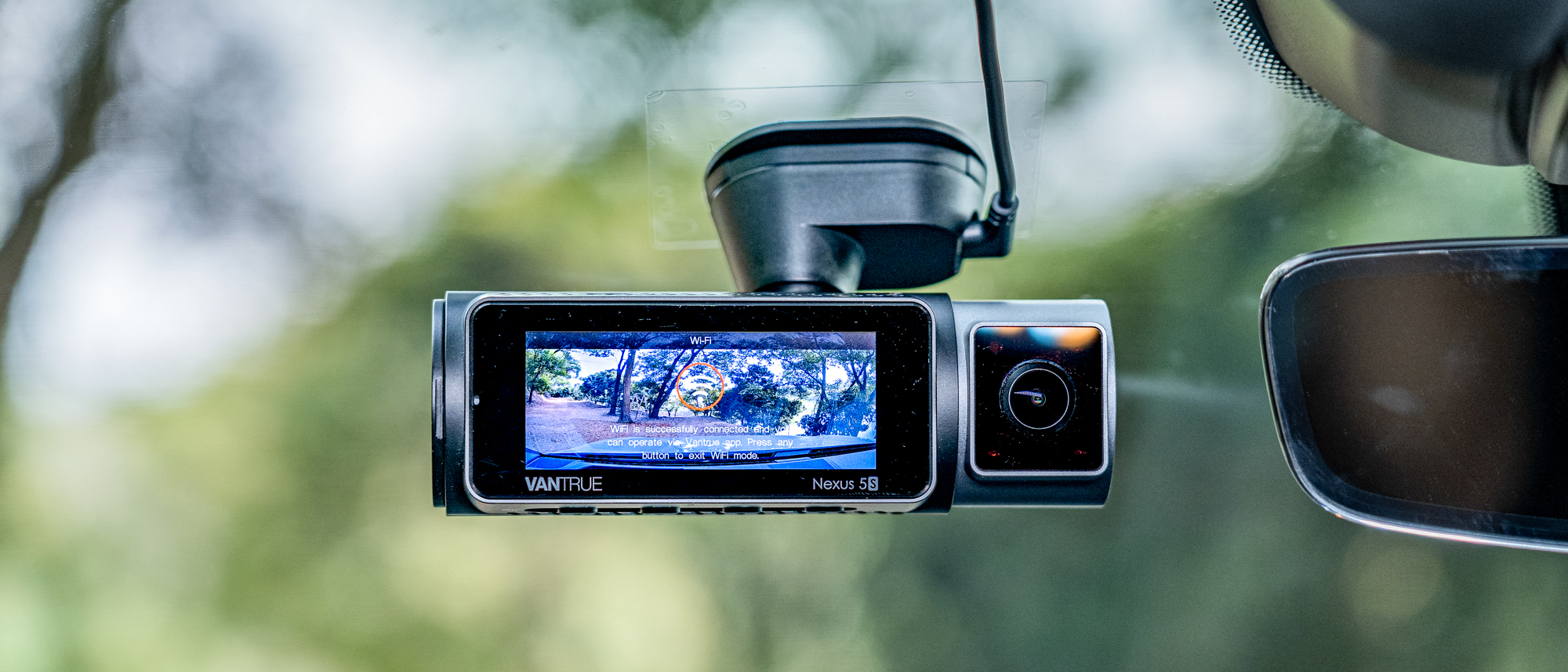Tom's Guide Verdict
The Razer Kaira Pro offers good sound quality and a comfortable fit, but suffers from a convoluted interface and some expensive extra features.
Pros
- +
Good sound quality
- +
Comfortable fit
- +
USB and Bluetooth connectivity
Cons
- -
Much more expensive than Xbox counterpart
- -
Obnoxious haptics
- -
Cumbersome customization options
Why you can trust Tom's Guide
Compatibility: PC, PS4, PS5, mobile
Drivers: 50mm
Frequency Response: 20 Hz – 20 kHz
Wireless: Yes
Weight: 12.9 ounces
When I first read about the Razer Kaira Pro for PS5, the device sounded like a sure contender for one of the best PS5 headsets. The Razer Kaira Pro for the Xbox is one of the best Xbox Series X headsets you can buy, and I expected that the device’s PS5 counterpart would follow suit.
As it turns out, I was half-right. Like the Kaira Pro for Xbox, the Kaira Pro for PS5 features excellent sound and a comfortable fit. Unlike the Kaira Pro for Xbox, however, the Kaira Pro for PS5 includes needless haptic features, which drive up the price, as well as convoluted customization features and cumbersome navigation options.
The Kaira Pro for PS5 might be a worthwhile investment — If you can get it on sale, and if you feel like ignoring the haptics, and if you get the hang of the myriad navigation options. But with so many of the best gaming headsets already optimized for use with the PS5, the Kaira Pro requires too many compromises for a strong recommendation.
Razer Kaira Pro for PS5 review: Design
If you’ve seen the Razer Kaira Pro for the Xbox, then the Razer Kaira Pro for PS5 should look pretty familiar. Like the Xbox version, the PS5 Kaira Pro is a somewhat plain-looking gaming headset with a padded headband, oval earcups, a plastic chassis and expandable steel arms. There’s a detachable headset, a charging port and a whole bunch of navigation buttons. The only major difference is that whereas the Xbox version was black and green, the PS5 version is black, white and blue. The only minor difference is that the Kaira Pro for PS5 has light-up RGB Razer logos on the earcups, which is either “cool” or “needless,” depending on your tastes.
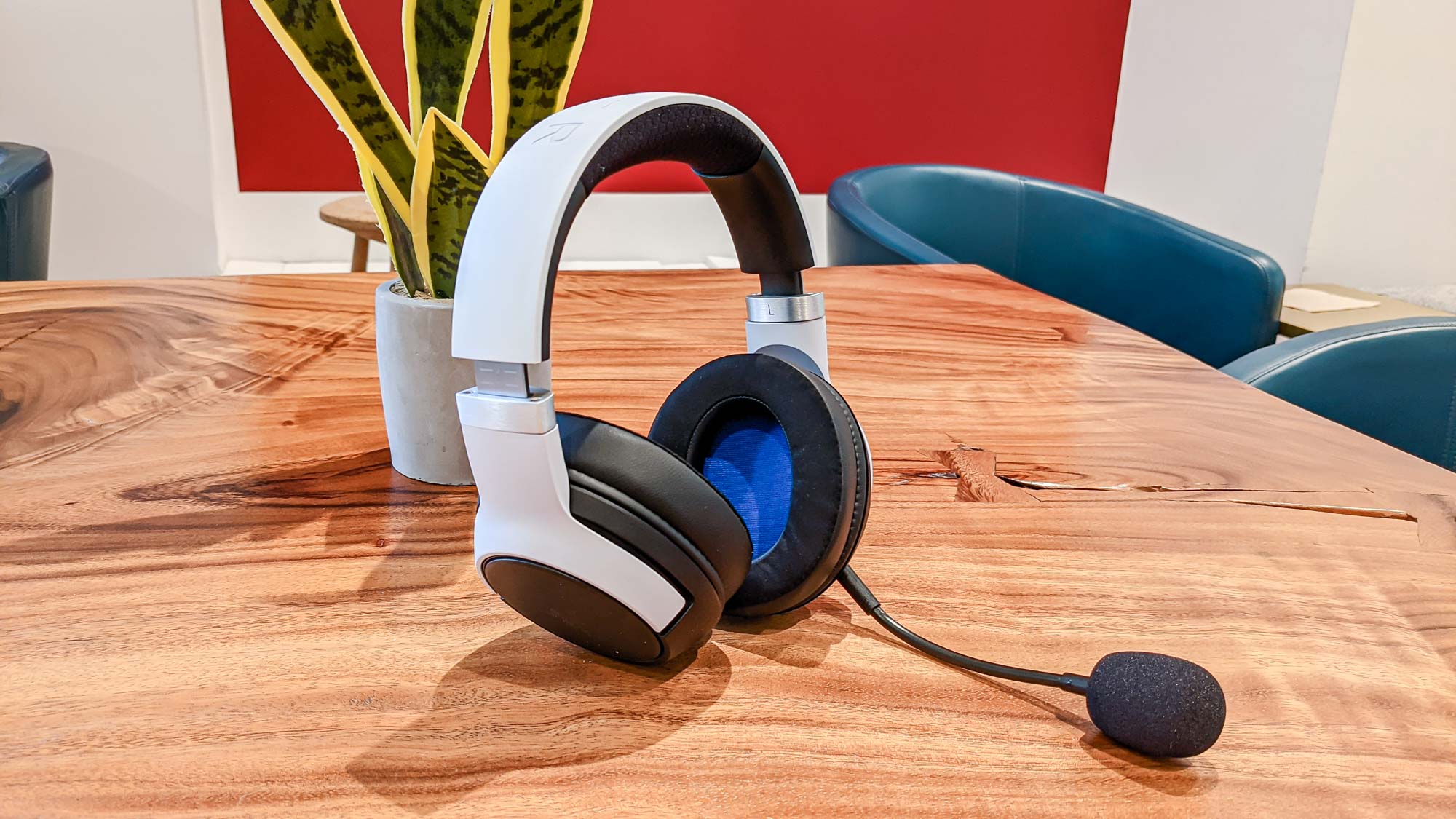
Something I noticed right away is that the Kaira Pro for PS5 has a few more buttons than the Xbox version, and that peripheral was already fairly crowded. On the right earcup, there’s a detachable flexible mic, a USB-C charging port, a power button, a volume dial and a mic mute switch.
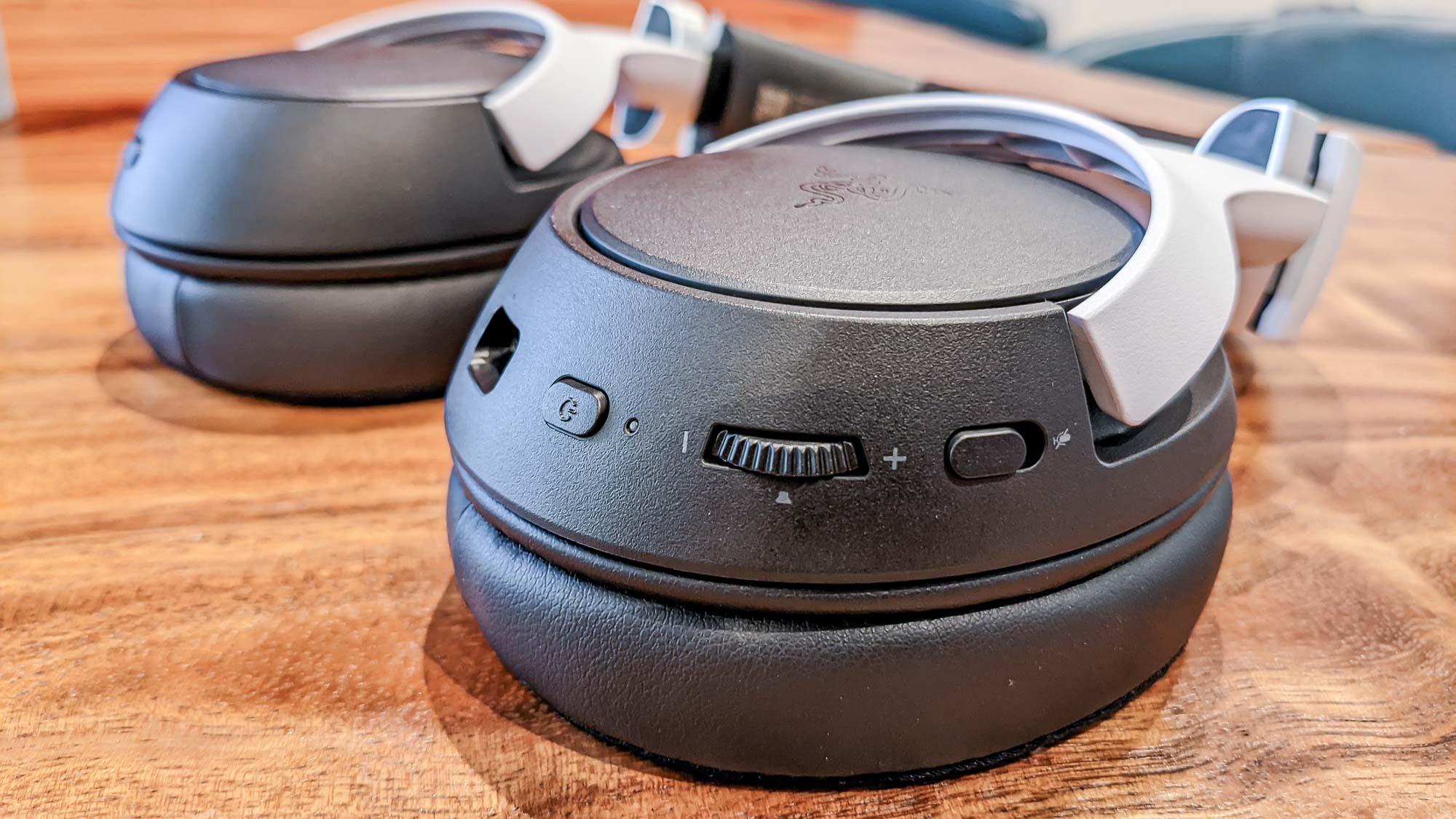
On the left earcup, there’s a HyperSense button (for tactile feedback), a game/chat mix dial and a button that controls equalization options, pairs Bluetooth devices and switches wireless modes, depending on how long you hold it for.
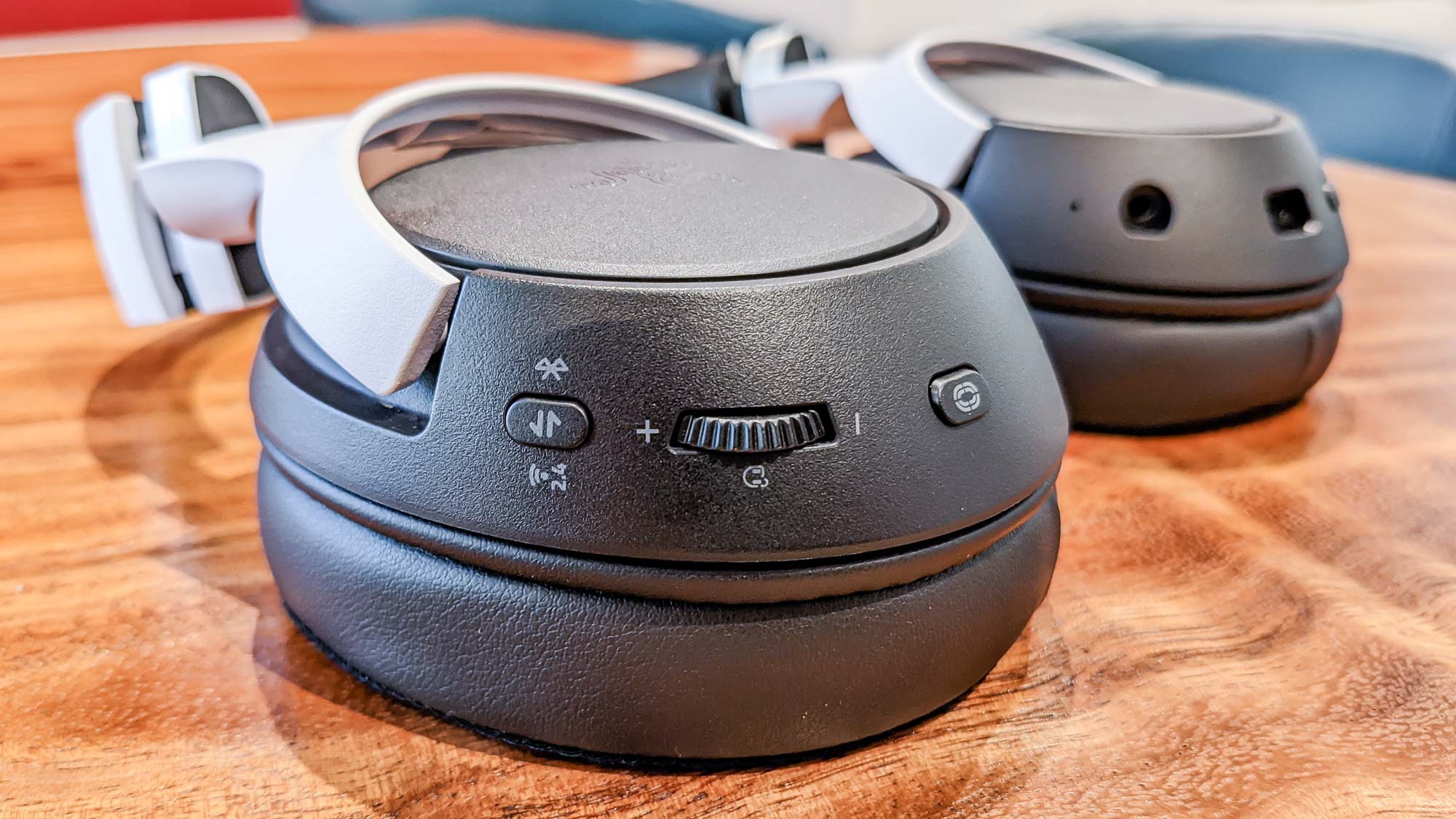
If that sounds a bit confusing, well, it is. The headset has a ton of buttons and a ton of features. Keeping track of them all can be difficult, especially since many of the buttons and dials feel almost identical. Figuring out how to use the Kaira Pro for PS5 took a few hours, as opposed to the Xbox model, which was pretty intuitive right out of the box.
Get instant access to breaking news, the hottest reviews, great deals and helpful tips.
Razer Kaira Pro for PS5 review: Comfort
The Razer Kaira Pro for PS5 is easy to wear for long stretches of time. With its generously padded headband and plush leatherette earcups, the headset feels comfortable, whether you’re working at a PC for hours on end, or enjoying a marathon gaming session on the couch. You can extend the headband thanks to sturdy steel bars, complete with numbered notches. This makes it simple to find a good fit and set it up to your liking every time you wear the headset, even if you share the device with housemates.

My one criticism here is that the earcups swivel extensively, so much so that they can feel loose. They stay in place pretty well once the device is on your head, but maneuvering it into place can be a bit of a challenge.
Razer Kaira Pro for PS5 review: Performance
One advantage of the Razer Kaira Pro for PS5 over its Xbox counterpart is that the PS5 variant plays nicely with both PCs and PlayStation consoles. While the Xbox version is attuned to Microsoft’s idiosyncratic wireless protocol, the Kaira Pro for PS5 works via USB-C with a PC, PS4, PS5, Nintendo Switch, mobile phone or just about any other system. It also has Bluetooth, although Bluetooth isn't ideal for gaming due to its increased latency.
As such, I ran through a variety of games with the Kaira Pro on both PC and PS5. On PC, I tried out games that are optimized for the platform, such as Age of Empires IV, Doom Eternal and Final Fantasy XIV. On PS5, I opted for more traditional console experiences, such as Nioh Remastered and Assassin’s Creed Valhalla: Dawn of Ragnarok.
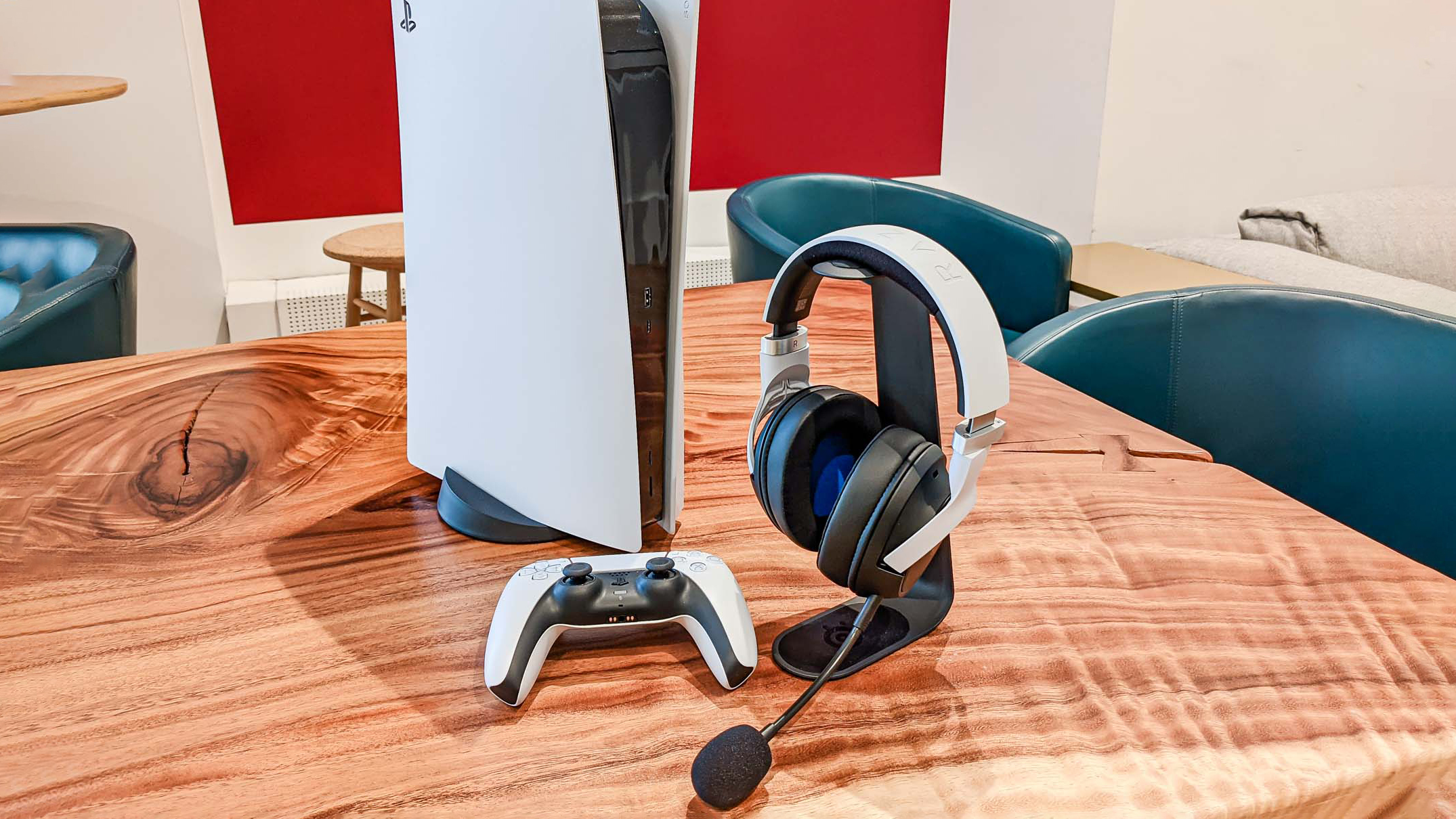
Generally speaking, the games sounded great, with a default soundscape that dutifully balanced music, sound effects and voicework. The device’s FPS equalization mode made footsteps and gunshots in Doom Eternal sound a bit more immediate; otherwise, the default setting worked fine for villagers chipping away at a medieval gold mine in Age of Empires, or two samurai warriors clashing their katanas in Nioh.
For music, the device worked well enough, although it’s not a hardcore audiophile headset by any means. I listened to tracks from Flogging Molly, Old Crow Medicine Show, the Rolling Stones and G.F. Handel. The Kaira Pro for PS5 presented the tracks with a good balance between bass, treble and vocals, although the Bass Boost equalization option felt a little too muddy for my tastes. The fact that the headset has a Bluetooth mode means that you can use it with both iOS and Android devices, which could be useful if you like to listen to music on the go.
Razer Kaira Pro for PS5 review: Features
Since the Razer Kaira Pro for PS5 can connect to PCs, I assumed I would be able to use the Razer Synapse software to customize software profiles, set up equalization profiles, adjust the RGB lighting and so forth. However, it wasn’t long before I realized that the headset has no such functionality. Instead, if you want to tweak the Kaira Pro’s lighting and sound options, you have to connect it to your phone via Bluetooth and use a specialized mobile app.
This process turned out to be much more miserable than I anticipated. After I paired the Kaira Pro with my phone, the Razer Audio app couldn’t recognize the headset for love or money. I eventually realized that the Audio app doesn’t recognize the Kaira unless you disconnect it from your phone’s standard Bluetooth interface, then perform a Bluetooth search directly in the app. Sometimes the search finds the Kaira, and sometimes it doesn’t.
Even when the software works as intended, there’s not much you can do with it. You can customize exactly one custom EQ profile, or adjust the lighting. That’s about it. It’s a far cry from setting up apps for individual profiles or creating complex lighting patterns in Synapse.

As discussed above, the RGB lighting on the earcups is a little pointless, since you can’t see them while you’re wearing the headset. But the earcups have one other feature that’s even more obnoxious: Razer HyperSense. As I discussed in my Razer Kraken V3 Pro review, HyperSense is a tactile feedback protocol that makes a headset buzz around your ears in response to in-game stimuli. Not only is this feature extremely irritating, but it’s absolute murder on the Kaira Pro’s battery life. With lighting and haptics turned off, you can get a respectable 30-50 hours from the device. With them on, you’d be lucky to get more than 10.
The Kaira Pro for Xbox didn’t have HyperSense features and, frankly, didn’t need them. I don’t think most gamers will want to spend an extra $50 on a headset to get a feature that simulates a large, angry fly constantly buzzing around their ears.
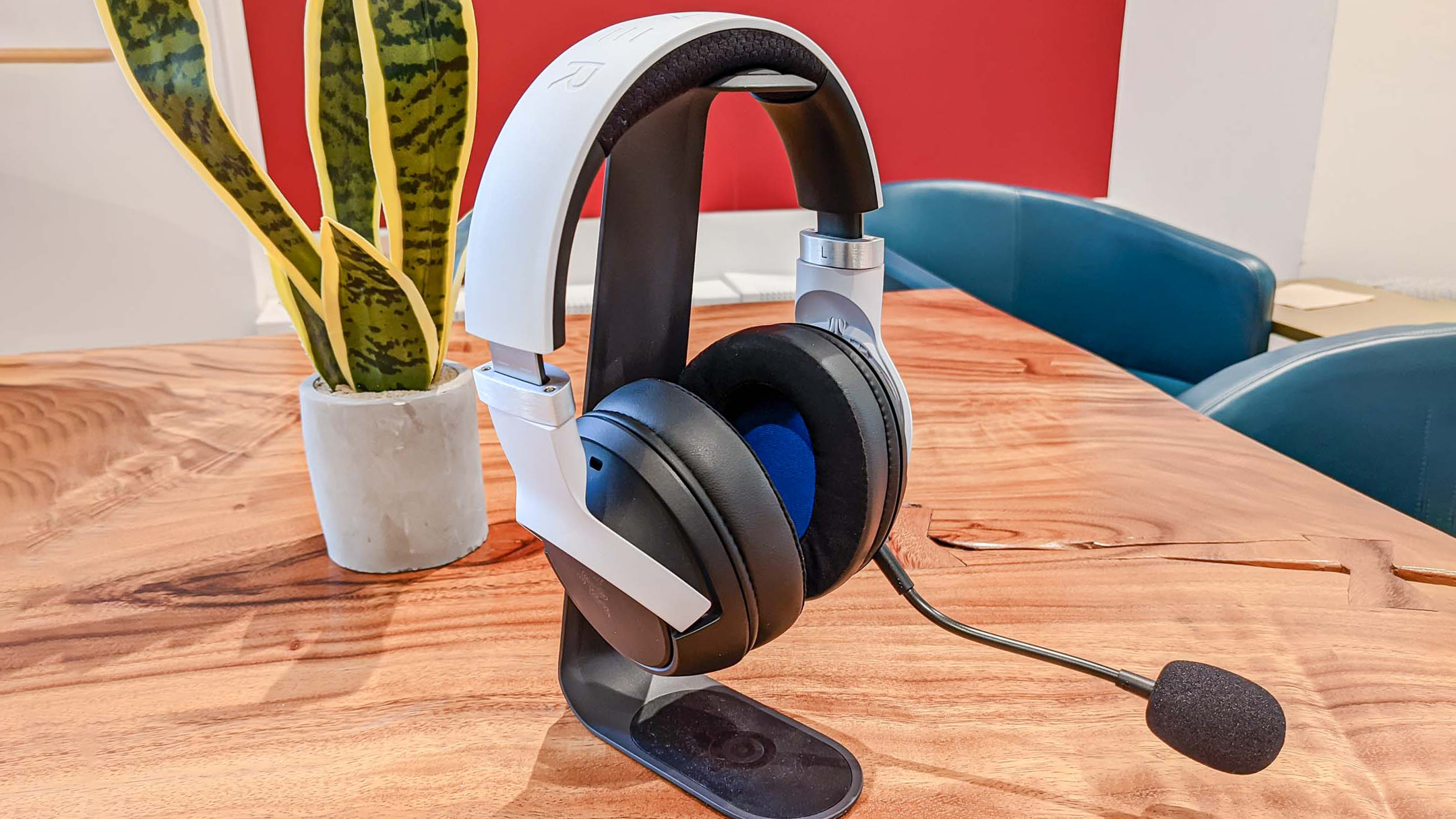
While the Kaira Pro for PS5 works with both USB and Bluetooth, it doesn’t handle either one perfectly. You can’t use the USB and Bluetooth channels simultaneously, so forget about listening to a podcast or taking phone calls while you play a game. On at least two occasions, the Kaira Pro refused to acknowledge its USB connection until I paired the headset with a Bluetooth device first. Pressing the pairing button sometimes switches channels, or sometimes restarts the pairing process, or sometimes adjusts the EQ options. The Kaira Pro for PS5 is not the easiest headset to navigate.
Razer Kaira Pro for PS5 review: Verdict
On the one hand, the Razer Kaira Pro for PS5 maintains the same basic design and features that made its Xbox counterpart such a success. On the other hand, the new additions make the headset harder to use, as well as much more expensive. The PS5 variant of the Kaira Pro should be an easy recommendation, but I found myself eager to put it down for good once my testing was done.
Part of the problem is that the PS5 simply has many more excellent wireless headsets available than the Xbox Series X does. For $150, you could get the SteelSeries Arctis 7P, which is much more customizable; for $200, you could get the HyperX Cloud Alpha Wireless, which has much better battery life. The Kaira Pro for PS5 gets the basics right, but in such a crowded market, that may not be enough.

Marshall Honorof was a senior editor for Tom's Guide, overseeing the site's coverage of gaming hardware and software. He comes from a science writing background, having studied paleomammalogy, biological anthropology, and the history of science and technology. After hours, you can find him practicing taekwondo or doing deep dives on classic sci-fi.

